The Gumshoe system of roleplaying games has a very interesting, simple-appearing method of generating characters. But that doesn’t mean you couldn’t use some help making your first character! Also, each Gumshoe Book has a slightly different feel or method of creation to fit the specific setting being evoked by that book.
In Gumshoe, you never roll any dice to create your character. Instead, you are assigned a number of points to use in character creation based upon the number of regular players. Depending on the system, those points are either used for Investigation Skills or split with General Abilities. That’s it.
Too simple? Well yes, but as with most rolepaying games, there is complexity under that hood. First and foremost, players have to understand the paradigm of Gumshoe games: each character, from the start, is a highly competent expert in his or her field and often in several fields of study.
Think about that for a moment. Depending on which version of Dungeons and Dragons, your 1st-level characters can be killed by a large rat (1st Ed.) to being able to take on multiple goblins or kobolds without serious fear of death (4th Ed.). In Fifth Edition, 1st level characters are in-between. Fragile but moderately competent.
In Shadowrun, your starting character is probably proficient, but not a master, in one to two areas. The same can be said in Savage Worlds and Call of Cthulhu games. At character creation, to achieve mastery, the player must sacrifice width of proficiency or competence. This is an essential tension intended in character creation.

Here I am going to explain and explore character creation in four Gumshoe Roleplaying Settings: The Esoterrorists, Trail of Cthulhu, Night’s Black Agents, and The Fall of Delta Green. I think you will see how each of these settings, builds on the prior ones, finds new paths, but ultimately achieves a synthesis in the Fall of Delta Green.
Before diving into each of those settings, let me explain what I’ve learned is the common thread, the base Gumshoe system, to each of these settings.
Principles of Character Creation Across Gumshoe Games
With Gumshoe’s Investigation Abilities, that tension is removed. Even a single rank (point) in one of these skills means you are not just competent, but an established master in that field. Additional ranks moves you from the top 10% to the top 5% and even 1% in your field.
In game-play terms, if you have one point in a skill, you can always find “core clues” in a scene when you invoke that skill. Core clues are the necessary pieces of information to help you solve the mystery. The additional points will help you achieve additional information or give you situational bonuses when the action begins.
However, the “standard” understanding of starting character competency from other games applies to General Abilities. These are the action-items that keep you alive and safe when the antagonists act, well, antagonistically towards the investigators. These are the skills that have a chance of failure.
If you do not have at least one rank in a General Ability, you are not allowed to make a Test against it. Tests are when you roll the single d6 that is used in Gumshoe. Tests are only called for if there is a chance of failure. Driving to the crime scene does not need a test. Trying to shake a tail while driving to the crime scene does require a test.
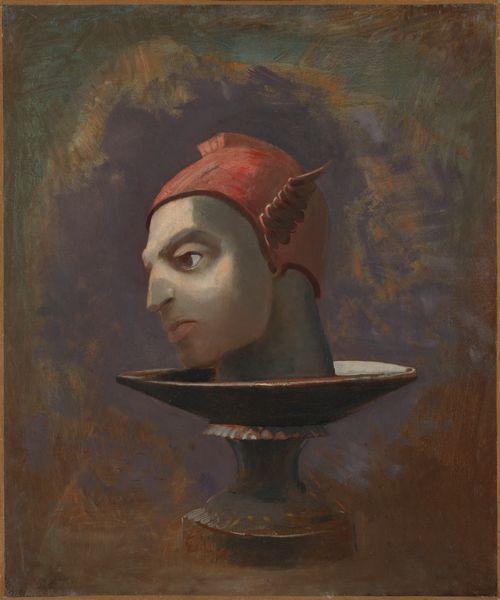
While there is no cap to how many ranks you can acquire in a General Ability, 8 ranks is considered mastery. Also, your highest ranked General Ability cannot be more than twice your second-highest ranked ability. For example, let’s say you only have two abilities, Driving and Shooting. With a Drive rank of 3, your Shooting rank cannot be higher than 6. This rule forces players to broaden their skill sets out.
Finally, you do not have to spend all of your character creation points. Any unspent points are rolled over and noted on your character sheet. Each point allows you to buy a single rank in an Investigation Ability or General Ability. The player can then spend, even in the middle of a scene or combat, that point to add a new ability or increase their ranks in a known ability!
Let that sink in. Your character could be the “tough” of your group. You specialize in combat General Abilities and the Investigation Ability that lean on being big and strong: Intimidation, Interrogation, Cop Talk, Negotiation, etc. You’re in an investigation scene where not all party members are present and you find a corpse. You want to find the cause of death and don’t have time to take the corpse to someone who knows Forensic Pathology (autopsy). You can spend a point to give you that Ability.
But what about the in-world fiction of your character? How did you go from not knowing how to do a field-autopsy to suddenly knowing how do one? Flashback montage. It’s not that your character didn’t know how to do a field-autopsy, but that there was no reason to reveal she knew how to do one all along.
Maybe during weapons training, your character had to take anatomy and physiology in a cadaver lab? A skilled marksman or close-combat fighter needs to know exactly where specific organs are. Or you may needed to know how to kill someone to make it look like natural causes without poison. Regardless of your reason, you know how to do it and can learn core clues from that scene.

The same is true for General Abilities. Adding a new ability mid-scene uses that same training-montage-flashback idea. Increasing your ranks in an already-known ability doesn’t need that explanation. By giving you both the rank increase and pool increase, you can immediately spend that pool-point to add the +1 to your next test.
Now that we’ve covered the basic concepts of Gumshoe Character creation, let’s go through several of the books: The Esoterrorists, Trail of Cthulhu, Nights Black Agents, and the Fall of Delta Green.
The Esoterrorists (2nd Edition)
In the Esoterrorists, you play as occult investigators. You start the game as members of the Ordo Veritatis. Ordo Veritatis is a secret organization, secretly sponsored by various national intelligence agencies. Your goal is to investigate and stop occult groups who seek to change the fabric of reality. Unlike Trail of Cthulhu, your characters are knowledgeable of the existence of these occult threats.
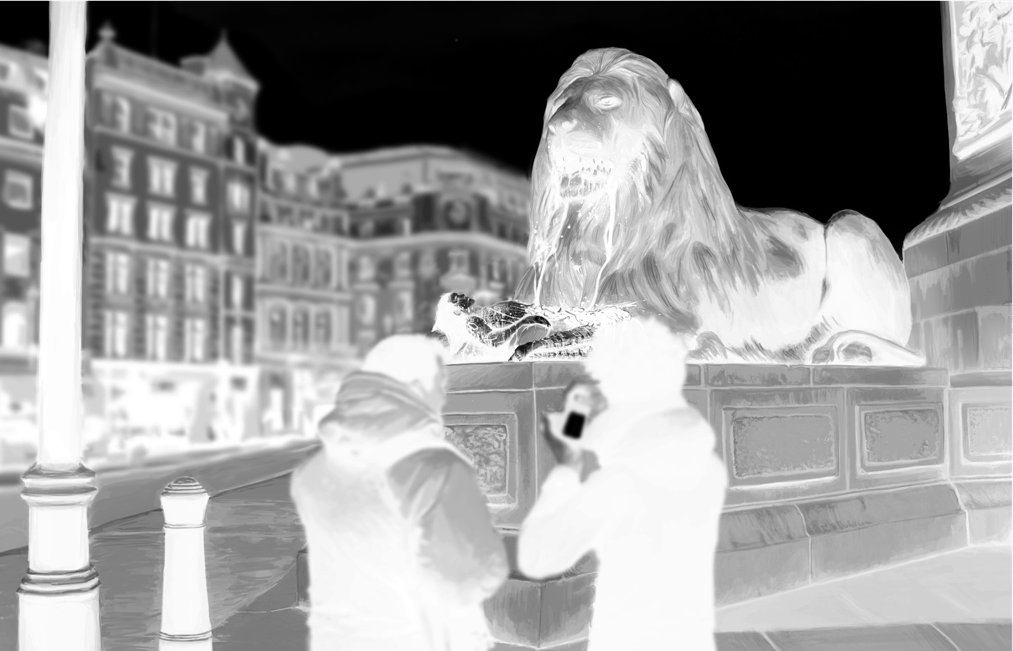
These threats come from the Outer Dark, which is an irrational region of chaos. The Membrane separates our logical, causal world from the Outer Dark. But where sources of great psychic traumas occur or where large groups believe irrational things (e.g. conspiracy theories), the Membrane thins.
Would be Magicians or Sorcerers or Charlatans who seeking power or something else, will try to further thin the Membrane with obscene rituals. Ultimately, they are trying to summon Outer Dark Entities whose horror will further thin the Membrane.
As members of the Ordo Veritatis, you are are seeking to stop this from occurring. You are trying to protect the boring, logical, causal world we know and love. But you must be careful in your methods so you don’t further thin the Membrane.
Step One: Character Cover and Contacts
The fact that your character is an occult investigator for the Ordo Veritatis is a secret identity. You will need to figure out your character’s “day-job”, family, and colleagues. These are potential sources of information and help, but that may place them in danger from the Esoterrorists. In other words, the perfect source of help and complication every game master loves.
Once you’ve figured out your “normal” identify, you’ll then need to figure out your “secret” identity. Ordo Veritatis uses a secret-cell structure and your character, along with the other characters, are members of the same cell. Do you use your real name with the other cell members or do you have a cover identity with the other cell members?

Finally, how did you become a member of Ordo Veritatis? Somehow you discovered that the occult is real, not just some mystic belief-system. Also, you’ve learned that it is possible to misuse that power. Finally, this knowledge then lead you into agree to joining the Ordo Veritatis.
Step Two: Assigning Investigative Abilities
In Esoterrorists, players get a separate point pool for Investigation and General skills. Each Player gets points based upon the total number regularly attending players:
| No. of Players | Investigative Skill Points |
| 2 | 32 |
| 3 | 24 |
| 4 | 22 |
| 5+ | 20 |
As you can see, if there are only 2 players, then each player gets a lot more skill points. The Esoterrorist Book emphasizes the importance of making sure that all of the various investigation skills are covered by all of the players. This game-ifies character creation that most other system avoids.
I don’t like this because it can force a player to add an investigation skill that doesn’t make sense for their character. But as my example above shows, you can justify how a character learned that skill. From a game perspective, your players can get core clues by just invoking a skill. If the players are missing several key skills, then a core clue can be missed.
The entire premise of Gumshoe games is players learn the core clues. Getting the clues is not the point. The point is for them to figure out what they mean and how they connect to the other clues. They learn and confirm that information by doing additional investigations and facing additional threats.
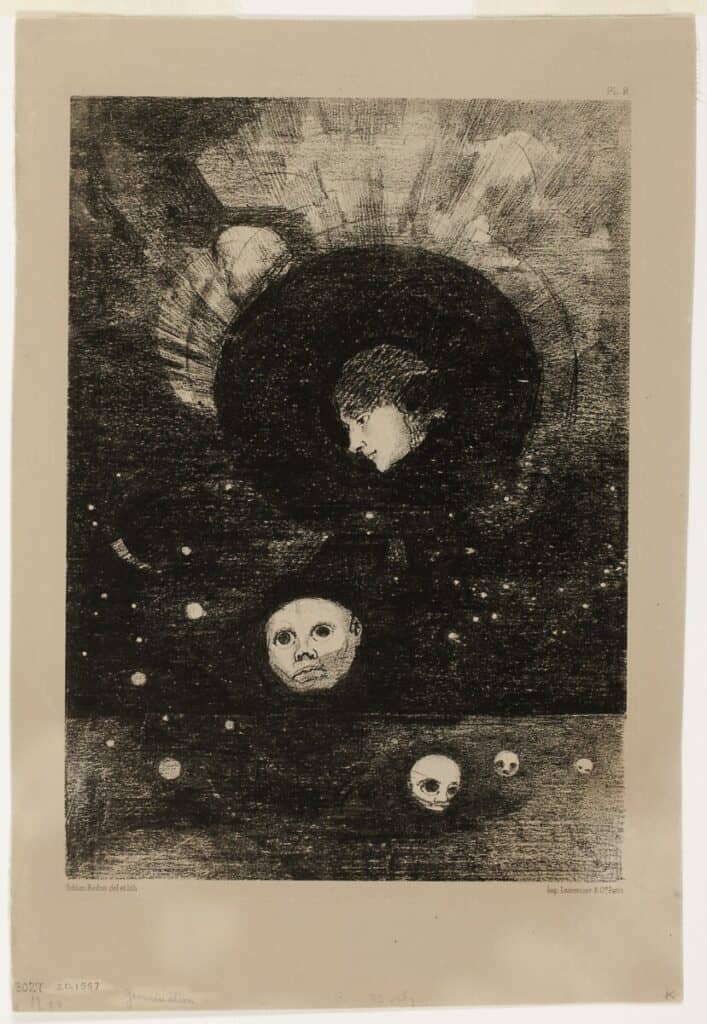
Investigation skills have three categories: Interpersonal, Technical, and Academic. As mentioned above, a single rank enables you to find core clues associated with that Ability. Additional ranks allows you to get additional information that is helpful, but not core (necessary).
| Academic | Interpersonal | Technical |
| Anthropology | B.S. Detector | Astronomy |
| Archaeology | Bureaucracy | Ballistics |
| Architecture | Cop Talk | Chemistry |
| Art History | Flattery | Cryptography |
| Forensic Accounting | Flirting | Data Retrieval |
| Forensic Psychology | Impersonate | Document Analysis |
| History | Interrogation | Electronic Surveillance |
| Languages | Intimidation | Evidence Collection |
| Law | Negotiation | Explosive Devices |
| Linguistics | Reassurance | Fingerprinting |
| Local Knowledge | Streetwise | Forensic Anthropology |
| Natural History | Forensic Entomology | |
| Occult Studies | Photography | |
| Pathology | ||
| Research | ||
| Textual Analysis | ||
| Trivia |
Local Knowledge is only available if you’re playing a “Station Duty” game. More on that later. All players get 1 rank in Occult Studies for free.
I recommend limiting the number of Investigative Abilities with more than one rank to a small handful. Also, don’t put any Abilities above 3 ranks. That is a waste of points. Remember, at 3 ranks in an Investigative Ability, you’re in the top 1% in your field.
Step Three: Assigning General Abilities
Each player gets 60 points to assign regardless of group size. The list of general abilities is shorter in Esoterrorists than in other Gumshoe Games. This reflects the gameplay and story focus of the Esoterrorists: characters are investigators, not SWAT team members. Within the fiction, it is another group within Ordo Veritatis who takes out the cultists, once your characters verify them.
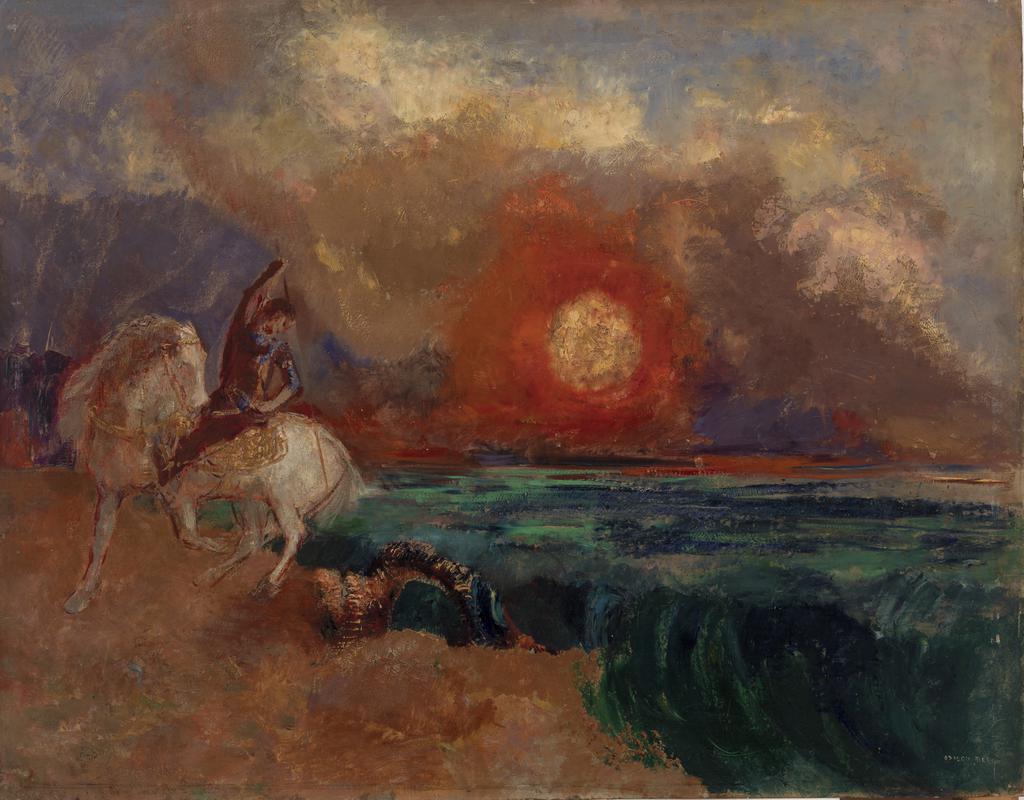
The Essoterrorists book has an interesting sidebar on Page 10. While most players focus on the Abilities they have to define who they are and their approach to problems, this sidebar suggests an alternative approach. The Abilities you don’t have say a lot about your character’s approach to situations.
The example the book gives is if you have no ranks in Flattery suggesting your character:
- is a lousy liar
- is too tongue-tied to let loose a flow of soothing compliments
- can’t stand to cater to others’ transparent emotional needs
- isn’t empathetic enough to tell what those needs might be
- has an ego forbidding you from shining the spotlight on anyone but yourself
With the narrower list of skills and 60 points to spend, you definitely should be adding additional ranks to the Abilities you select. The game identifies what the various rank levels means about your character’s ability
| 1-3 Ranks | You’re a hobbyist or apprentice |
| 4-7 Ranks | You’re competent, a journeyman |
| 8+ Ranks | You’re a master at your crft |
The following are the General Abilities available to your character:
| Ability | Brief Description |
| Athletics | Your ability to use your strength, body, or agility. |
| Driving | Your ability to drive any vehicle under stress |
| Filch | Sleight of hand, pick pocket, place evidence |
| Health | See below |
| Infiltration | Disable security systems, open locks, sneak, find ways into buildings |
| Mechanics | Repairing, building, and disabling devices; discover the unique signature/techniques of a master craftsmen. |
| Medic | Apply first aid |
| Preparedness | See below |
| Scuffling | Hand-to-hand fighting, with or without weapons |
| Shrink | Able to reassure and calm the mentally troubled, even provide long-term treatment of mental illness |
| Shooting | Using all types of firearms. |
| Stability | See below |
| Surveillance | Ability to tail, track, watch targets; hide in plain sight; be aware of potential hazards around you. |
Starting Health and Stability
In The Esoterrorists, like many of the Gumshoe Settings, Health (physical health) and Stability (mental health) are grouped in the General Abilities. When you are hurt in a fight, you lose health. When you come across a horrific crime scene or see an Outer Dark Entity you lose stability.
At character creation, the same points you use to buy these other General Abilities, you can spend to increase your Health and Stability. You start with one in each Ability. You should probably get each one to at least 7, if not a bit higher. The only die used in Gumshoe is a d6. With 7 points, if you take a d6 health or sanity loss, you won’t immediately drop to zero.
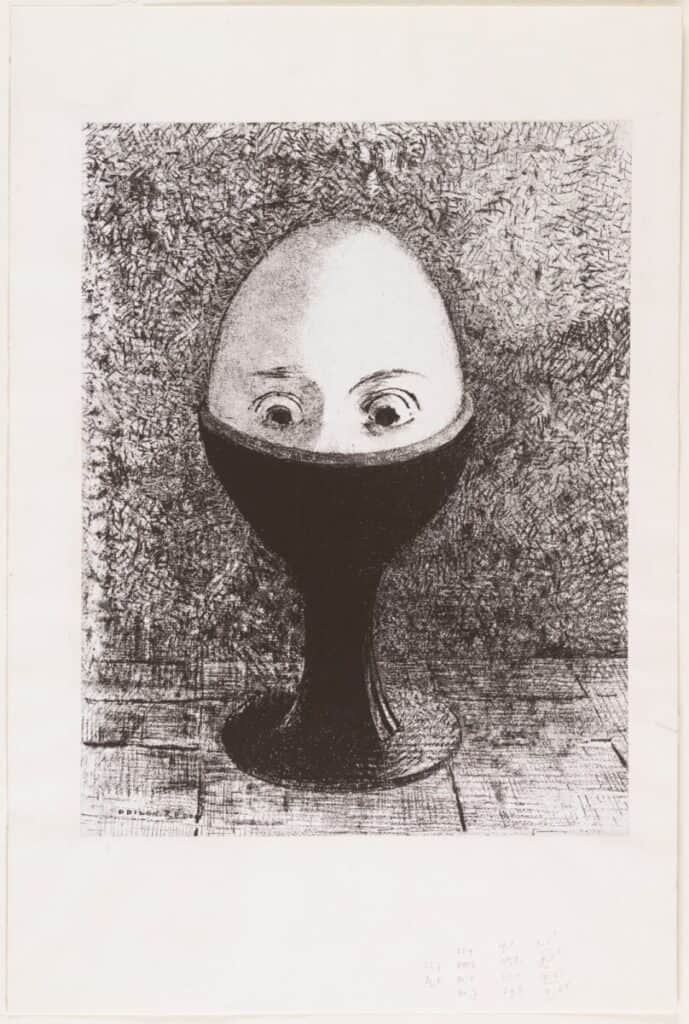
Speaking of zero, you can go down to a -12 in health before your character is dead. But when you drop to below zero Health (aka -1 or lower) then you must make a consciousness test. Your difficulty is the absolute value of your health score (if you have a -2, then you must roll a 2 on a d6) to remain conscious.
If you want to add a bonus to your roll, then you must spend points of your health to do so. For example, your character is at -3 health and must make a consciousness roll. She really needs to stay up to take another shot at a cultist. She can spend 2 health (taking her down to -5) to ensure she stays conscious (even if she rolls a 1, with the +2, she is ensured of getting at least a 3). Once you drop to -6, you can remain conscious but are no longer able to fight.
The same system applies to Stability: it can drop below zero. When it is between 0 and -5, your character is Shaken. The difficulty number for all General Ability tests is increased by 1. It also becomes more difficult to make Investigative Spends.
While you can still obtain core clues by invoking your Investigative Abilities, you cannot just automatically spend pool points to gain additional information if your Stability is at 0 to -5. Instead you must make a test where the difficulty is the absolute value of your current stability. Like with Health, you can spend your Stability to gain a bonus to the roll.

If your Stability drops to -6 to -11, you gain a permanent mental illness that persists even when your Stability recovers. Aside from the personality and behavioral changes, your character is permanently Shaken. Your character also loses one rank in their Stability rating that can only be regained by spending build points.
It is possible to be successfully treated/cured of this mental illness, but it takes in-game time. However, if your Stability drops to a -12, you’re incurably insane. You and the Game Master can decide how your character exits the game.
Remember, you do not need to spend all of your build points at character creation. If you have a few spare points, you can spend them on the spot to increase your pool and your current health or stability level.
Preparedness
As I talked about in my explanation of the Gumshoe System, I absolutely love the Preparedness skill. If your character has points in preparedness, that means your character thinks ahead, plans, and obtains the gear necessary to achieve the mission objectives. This is true, even if you the player are not that way.
This solves one of the potential problems with the Shadowrun system: spending hours shopping to ensure your kit has enough different items to anticipate every situation the game master throws at you. I personally find that boring as a GM and Player.
A preparedness test is called when you need a specific object for the situation (say a handy pack of shape-charged C4 plastic explosives or a flash-bang grenade). So long as you have ready access to your kit bag or tactical vest, then if you roll a 4 on a d6, you have that item. Spending points ensures access.
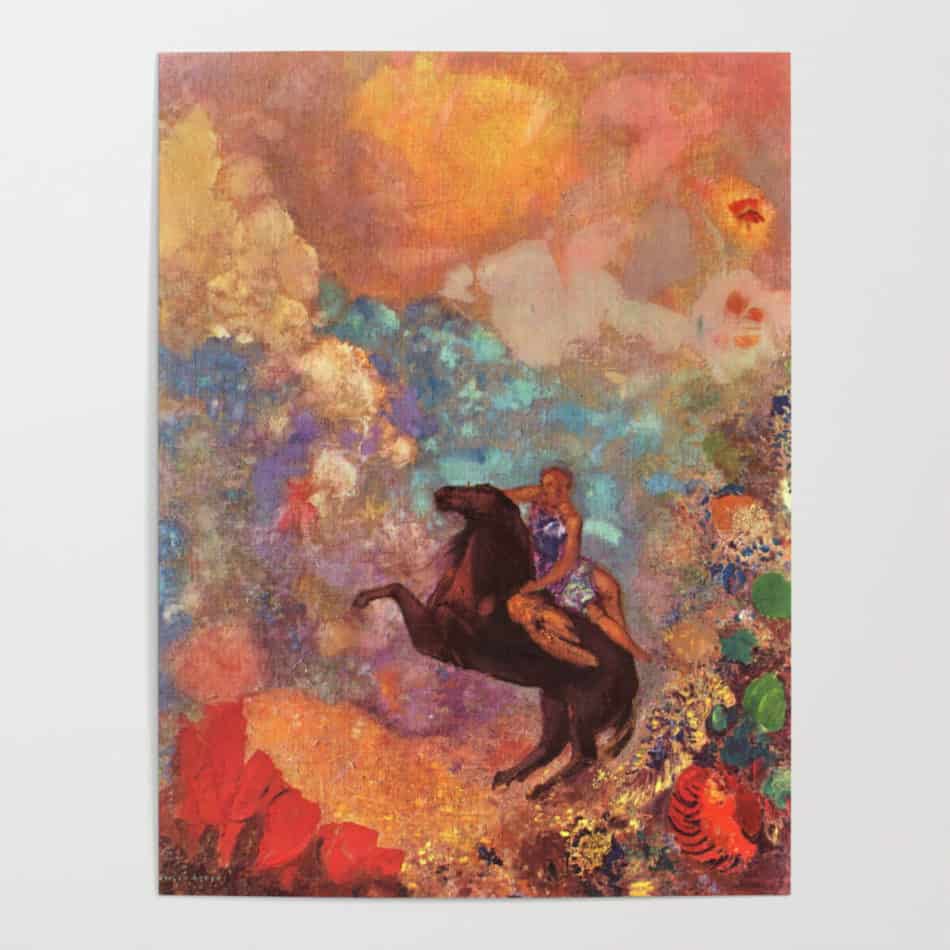
But as the Esoterrorist book explains, there can be some limits imposed by the Game Master:
The sorts of items you can produce at a moment’s notice depend not on your rating or pool, but on narrative credibility. If the GM determines that your possession of an item would seem ludicrous or out of genre, you don’t get to roll for it. You simply don’t have it. Any item which elicits a laugh from the group when suggested is probably out of bounds.
The Esoterrorists, p. 17
Alternate Game Play Styles
The default game-play style of Esoterrorists is episodic. Your characters do not live in an area and protect it from the Outer Dark Entities. Instead, your cell is called together by a senior member (always called a Mr. or Ms. Verity) of the Ordo Veritatis at a safe location, briefed on the mission, and then your team assembles at the first location.
This means your particular cell could be called to investigate anywhere in the country or world. You show up, find the esoterrorists, identify the Outer Dark Entity that was summoned, and end the threat yourself or by calling in the OV’s special forces. The Game Master may string these together into a longer campaign or your group may decide to maintain the episodic style.

Bu on page 79, the Esoterrorists book suggests a different campaign frame: Station Duty. Your group is assigned to a specific town where the Membrane between our logical reality and the chaos of the Outer Dark is thin. Maybe its your hometown or your a bunch of recent carpetbaggers. The book suggests a 50/50 mix of locals and out-of-town OV veterans.
Regardless, the mystery your team is unravelling spans several different investigations. For characters in a Station Duty Game, there are a few additional character choices. These choices differ if your the out-of-town veteran or a local.
Ordo Veritatis Veteran
What was your life before being assigned to live in this town? Did your family come with you? What is your cover story and cover job? What about your former “real” job? These are background questions your character should answer.
Ordo Veritatis Local, New Recruit
For the locals, the group will need to decide how they were recruited. Do you run a “Session Zero” investigation that everyone knows will end in the locals being recruited and inducted? You’ll also need to establish who your character is in the town and their web of contacts.
But as new recruits, you can only take one rank in any Technical Investigative Ability at character creation. Remember, one point still means you have a high level of expertise in that area, you’re just not in the top 1% or 5% in the field.
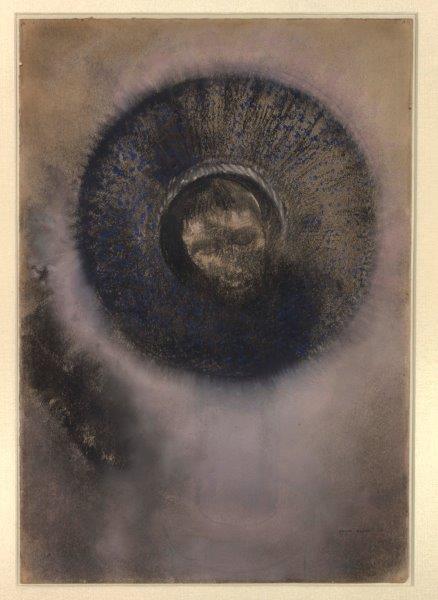
As compensation though, you can have a “Local Knowledge” Investigative Ability. In creating the town, the Game Master needs to identify the various area groups, regions, factions, etc. within the town. For example, the Police Department may be a faction or The Elks Club. So by taking a rank in Local Knowledge, it is specific to one of the available options created by the Game Master. This means you can take more than one different Local Knowledge.
Regardless whether your a Veteran or New Recruit, the Players and GM will need to pick a location for the Ordo Veritatis Station in the the town. You will need to decide the cover story for the location, plus the facilities and station assets. But these latter pieces require characters to spend their Investigative Build Points to acquire.
Sources of Stability
An optional feature for the Station Duty game is on page 81 of the Esoterrorist Book: Sources of Stability. This rule is borrowed from the Gumshoe Setting Fear Itself and is also used in Nights Black Agents and Trail of Cthulhu.
For every 3 Stability Ranks/Points, your character must name a Source of Stability (but not another player character) and an identifying phrase. The NPC details can be fleshed out later. A Source of Stability is someone your “character confides in and relies on, one person who makes the world worth fighting for.”

There are two ways the Game Master can use this optional rule. First, your Source of Stability is someone you can visit mid-investigation to let you refresh all or half of your Stability Pool. Or, if you do not regularly go and visit them, then you can never refresh your Stability Pool mid-Investigation or between Investigations.
If the Esoterrorists find out about one of your Sources of Stability and threatens your character with them, then your character must immediately make a Stability Test (e.g. risk loosing current Stability). If that Source is killed, then you permanently loose the ranks (and current) of Stability associated with that Source.
Final Thoughts on Esoterrorists Character Creation
As we will soon see, what sets the Esoterrorists Character creation apart from the other game settings, like Trail of Cthulhu on one side and Night’s Black Agents on the other is who your character is and what they know about the game’s primary antagonists.
The character creation methodology is very similar between all of these systems. The difference is where your character exists, what role they inhabit in the investigation. In the Esoterrorists, you are established agents who know your foe and their methods. The existence of the Esoterrorists is not the big reveal; that veil is already lifted.
Instead, the game creates tension between your teams need to solve the mystery while trying to maintain effective cover. Then at the end of the mission, you then have to decide how to do your veil out: the “rational” cover story that explains and hides what really happened. In many ways, this evokes the same sense of maintaining the Masquerade in Vampire.
Trail of Cthulhu
In contrast to the modern or current timeline setting of the Esoterrorists or Night’s Black Agents, Trail is default set in the early 1900s, maybe even up to the early 1950s. As is true with other Lovecraftian games, like Call of Cthulhu, the feel of these games is noir investigation.
At the start of the game, your characters are good at what they do, but they know nothing of the Cthulhu Mythos. They are novitiates to the mind-bending reality of Great Old Ones. But they are somehow assigned to investigate a murder, an odd occurrence, or an unusual event.
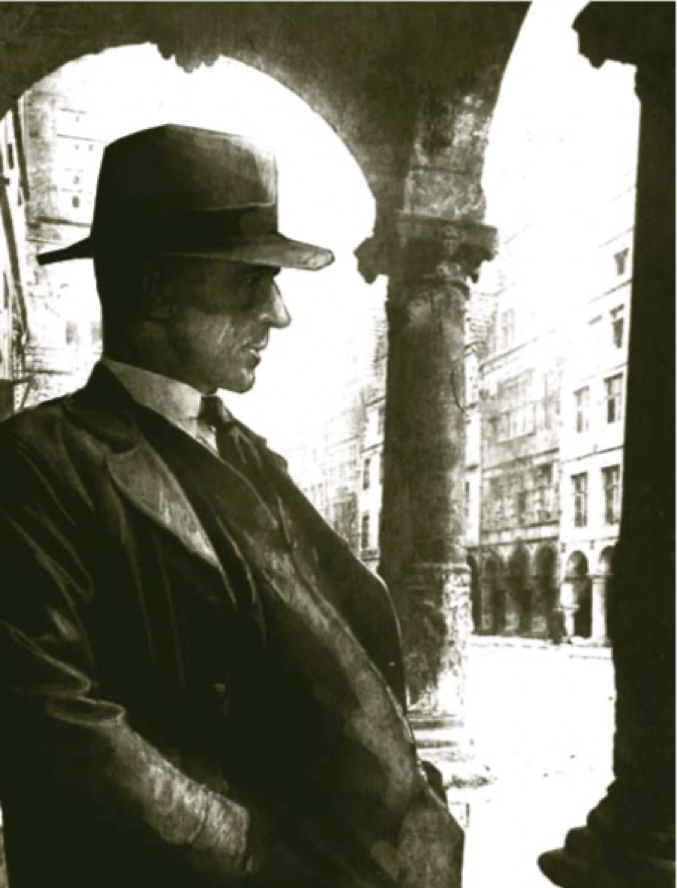
It is through that investigation they learn of strange cultists who are believed to only be mundane threats. But as their cult is dismantled, their writings searched for clues, that your investigators are then confronted by something that confirms the truth of their insane ramblings. This transforms the threat into something arcane an inexplicable.
Before you and your team of investigators get to that point, you must create your investigator.
Step One: Picking your Occupation
Unlike the freeform Investigative Ability selection of The Esoterrorists, in Trail of Cthulhu, you pick an Occupation. That Occupation provides your character with a selection of Occupational Abilities. For each build point spent on an Occupational Ability, you get two ranks. This is the list of Occupations in Trail of Cthulhu.
| Alienist | Antiquarian | Archaeologist |
| Artist | Author | Clergy |
| Criminal | Dilettante | Doctor |
| Hobo | Journalist | Military |
| Nurse | Parapsychologist | Pilot |
| Police Detective | Private Investigator | Professor |
| Scientist |
Not only does your occupation give you your Investigative Abilities, it also establishes your Credit Rating. Plus it identifies special abilities your character possess. For example, the Alienist can use Medicine as an Interpersonal Ability to talk your way into sanitariums and possibly hospitals.
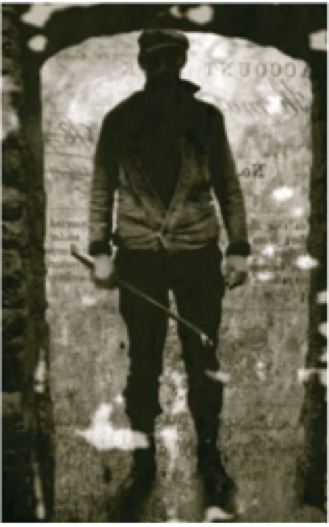
Credit Rating describes your economic class as much as your income. This game may call into question whether you can afford to travel by ship from New York to London, but not often. Page 33 describes Credit Rating more as an Interpersonal Ability, “Credit Rating does not necessarily describe the size of your bank account, but your ability to operate within a given socio- economic bracket.”
You get the lower end of the point range listed for Credit Rating for free. You are permitted to trade those free points for ranks in a different Investigative Ability. You can also spend your build points to raise it.
Step Two: Select your Drive
Drive is what motivates your Investigator. Let’s be honest, there has to be something a little broken inside your investigator to keep pushing forward, despite the danger to your health and sanity. If your familiar with The X-Files, Mulder’s drive is based upon the alien abduction of his sister that he witnessed.
For each Drive, the book explains the possible reasons why your character has that Drive. It also suggests the Occupation that Drive may best fit with. Finally, it gives examples of fictional characters that share the drive.
| Drive | Associated Occupations |
| Adventure | Criminal, Military, Parapsychologist, Pilot |
| Antiquarianism | Antiquarian, Archaeologist, Clergy, Professor |
| Arrogance | Alienist, Scientist |
| Artistic Sensitivity | Artist, Author, Dilettante |
| Bad Luck | Criminal, Hobo |
| Curiousity | Journalist, Parapsychologist, Police Detective, Private Investigator, Scientist |
| Duty | Clergy, Doctor, Military, Police Detective |
| Ennui | Artist, Dilettante, Military |
| Follower | Doctor, Military, Police Detective |
| In the Blood | Antiquarian, Dilettante |
| Revenge | Criminal, Private Investigator |
| Scholarship | Archaeologist, Professor, Scientist |
| Sudden Shock | Parapsychologist and any other |
| Thirst for Knowledge | Archaeologist, Parapsychologist, Professor |
Step Three: Spend Build Points
The build points you get for Investigative Abilities varies depending on the number of players. Each player gets 65 points to purchase General Abilities. The number of Investigative points for players is:
| # of Players | Investigative Build Points |
| 2 | 24 |
| 3 | 18 |
| 4+ | 16 |
A sidebar on Page 24 provides an optional rule if you want to lower your character’s competence levels. The General Build points are only 60 with the following Investigative Build Points
| # of Players | Investigative Build Points |
| 2 | 16 |
| 3 | 12 |
| 4+ | 10 |
The Investigative Abilities are separated into three categories: Academic, Interpersonal, and Technical.
| Academic | Interpersonal | Technical |
| Accounting | Assess Honesty | Art |
| Anthropology | Bargain | Astronomy |
| Archaeology | Bureaucracy | Chemistry |
| Architecture | Cop Talk | Craft |
| Art History | Credit Rating | Evidence Collection |
| Biology | Flattery | Forensics |
| Cthulhu Mythos | Interrogation | Locksmith |
| Cryptology | Intimidation | Outdoorsman |
| Geology | Oral History | Pharmacy |
| History | Reassurance | Photography |
| Languages | Streetwise | |
| Law | ||
| Library Use | ||
| Medicine | ||
| Occult | ||
| Physics | ||
| Theology |
Cthulhu Mythos is not available to be taken at character creation. It is only learned during play, at the expense of your character’s Sanity. Again, the game book suggests that players make sure each (or as many) of the various Investigative Abilities are selected as possible.
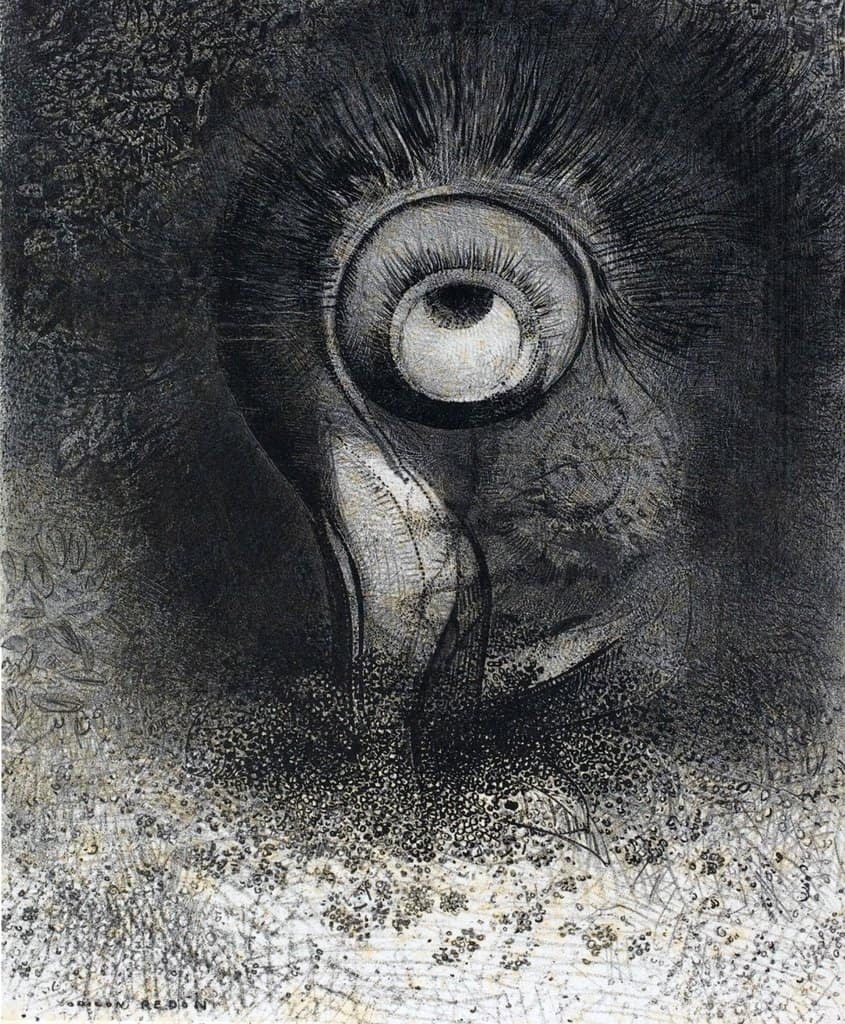
Next up is selecting your General Abilities. As mentioned above, its 65 points and if you want to feel more frail, then its 60 points. But if you want a more pulp, powerful style game, then the optional rule takes you up to 70 build points.
| Athletics | Conceal | Disguise |
| Driving | Electrical Repair | Explosives |
| Filch | Firearms | First Aid |
| Fleeing | Health | Hypnosis |
| Mechanical Repair | Piloting | Preparedness |
| Psychoanalysis | Riding | Sanity |
| Scuffling | Sense Trouble | Shadowing |
| Stability | Stealth | Weapons |
As you can see, the list of General Abilities in Trail of Cthulhu is longer than in The Esoterrorists. It also adds a new rule regarding the Bolded Abilities. These four General Abilities can be used as an Investigative Ability under specific circumstances.
Again, no General Ability can be higher then twice the second-highest Ability. The exception is if your Occupation has a General Ability listed.
Another difference is there is Health, Stability, and Sanity. Every player starts with 1 free point in Health and Stability, but 4 free points in Sanity. The default rules does not put any cap on General Abilities. But it suggests an optional rule if you’re running a game in “Purist Mode”: Capping Health and Stability at 12 and Sanity at 10.
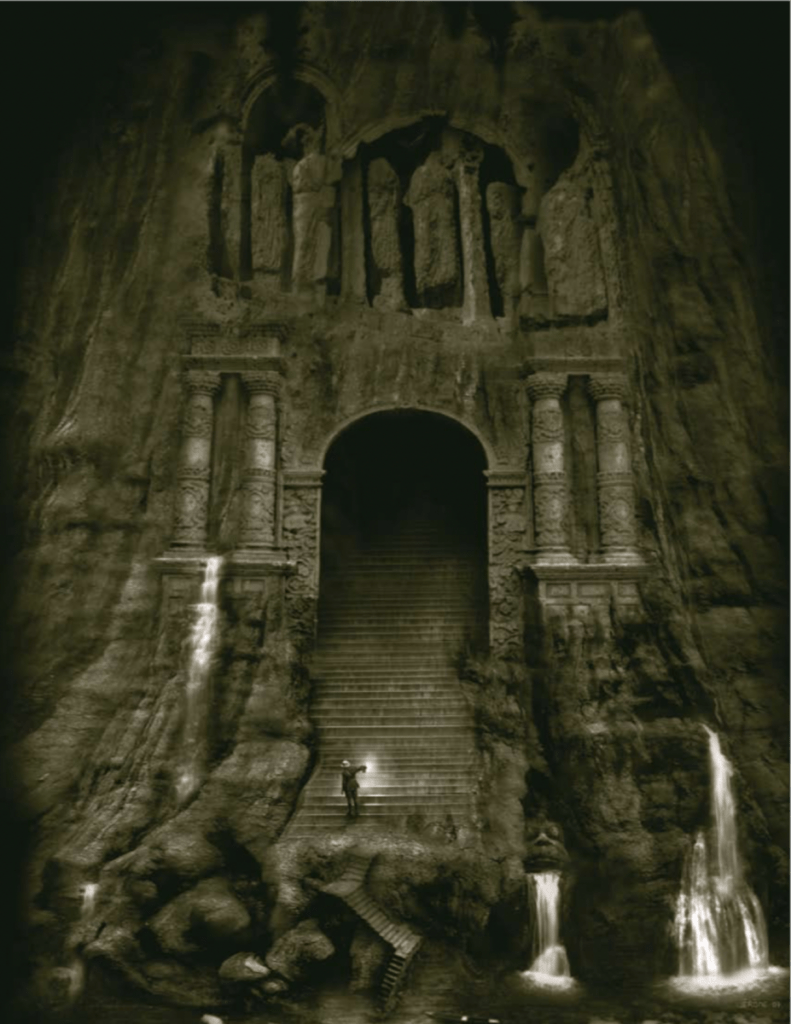
Health is self-explanatory. The pool goes down to -12. From zero to -5, your Investigator is Hurt and cannot spend on Investigative Abilities and all test difficulties are increased by one. At -6 to -11, you are seriously wounded and must make a Consciousness Roll (this is different than in the Esoterrorists). Even if you make it, you’re not able to fight.
Stability is your character’s ability to keep it together, to be calm under pressure. In other games, this might be called a fear effect. Failing a Stability check means that you have lost control, that you’ve panicked, are in blind frenzy, or nearly catatonic. Failing a Stability Test can result in a loss of Stability and Sanity.
If your Stability drops between zero and -5 (Shaken), then you lose one Sanity rating. If it’s -6 to -11 (Blasted), then you lose 2 Sanity rating. You can only suffer one such rating loss once per Investigation. If your Stability reaches -12, you are incurably insane.
Sanity measures your ability to withstand the Truths of the Cthulhu Mythos. It measures your ability to sustain belief in any fundamental human concerns whatsoever. Unlike other General Abilities, there are never any Sanity Tests and you do not spend points from your pool.

For each point in Cthulhu Mythos you gain, your maximum Sanity decreases. Once you learn any Cthulhu Mythos your Sanity can never be higher than 10 minus your Cthulhu Mythos rank. Also, each time you invoke the Cthulhu Mythos ability, you lose one Sanity from your pool. If your Sanity hits zero, then your moral code has collapsed and you’ve become what you were hunting.
In short, your Stability pool measures how close you are to snapping today; your Sanity pool measures how close you are to seeing the Truth forever.
Trail of Cthulhu p. 69
While most of the General Abilities are self-explanatory, there are a few unusual options. For example, Fleeing. In Lovecraftian stories, running away is an important skill. By having this as a skill, it means you must make tests when running from Eldritch horrors.
Another is Hypnosis, which is only available to the Alienist Occupation. On page 43, the Ability has a long write up for the types of things you can do with this Ability. This includes putting people in a simple hypnotic state, establish rapport, recover memories, or even plant false memories.
Step Four: Define your Pillars of Sanity and Sources of Stability
For every 3 points of Sanity, the Character must define a Pillar of Sanity. These are abstract principles the Investigator holds dear. But these Pillars can be damaged or undermined by exposure to revelations about the Mythos. Examples of Pillars are a religious faith, human dignity, physical laws, and patriotism. Naturally, revelations that undermine a Pillar will further reduce your Sanity.
With every 3 points of Stability, you must identify a Source of Stability. This is a person that helps you stay sane in the face of worldly or otherworldly terrors. They are the motivation for you to keep pushing forward, to protect them from the Mythos. You should also come up with a phrase that identifies why or how they provide stability.
Of course, if anything were to happen to a Source, then not only must you make a very difficult Stability Test, you would permanently lose your Ranks of Stability associated with that Source. You can be sure that the Cultists you’re investigating would never do them harm if they found out their relationship to your Investigator.
Step Five: Choose your contacts and personalize your character choices.
As an established expert in your field, you have colleagues, contacts and acquaintances. These are people you know and can go to for help and information. If you want to invoke one of your Investigative Abilities to call on a professional contact, the Player must “supply the Keeper with her name, residence, and specific connection to your Investigator.” Page 31.

Spending points from that Ability will improve that contact’s attitude towards your investigator and provide additional information above the free core clues. Of course, nothing is free and your contact may demand something in return for their help.
Personalizing your character is identifying quirks, character flaws, etc. Maybe they only smoke a particular brand of cigarette. Or they are always impeccably dressed, no matter the time or occasion. These are the small characterizations that bring your Investigator to life.
Final Thoughts on Trail of Cthulhu Character Creation
When I first read through Trail’s Character Creation section, I thought it was going to be more streamlined than the Esoterrorists. It appeared as if Occupations was going to be a package of Investigative and General Abilities. By picking Private Investigator, you had all of the heavy lifting done, with maybe a few extra points to customize your character.
Instead, Occupation merely made specific Abilities cheaper (2 for 1) to acquire. This carries through Character Advancement. Also, your Occupation gave you a special ability or approach to scenes. But rather then specialize your character around the Occupation, it makes your character more of a generalist.
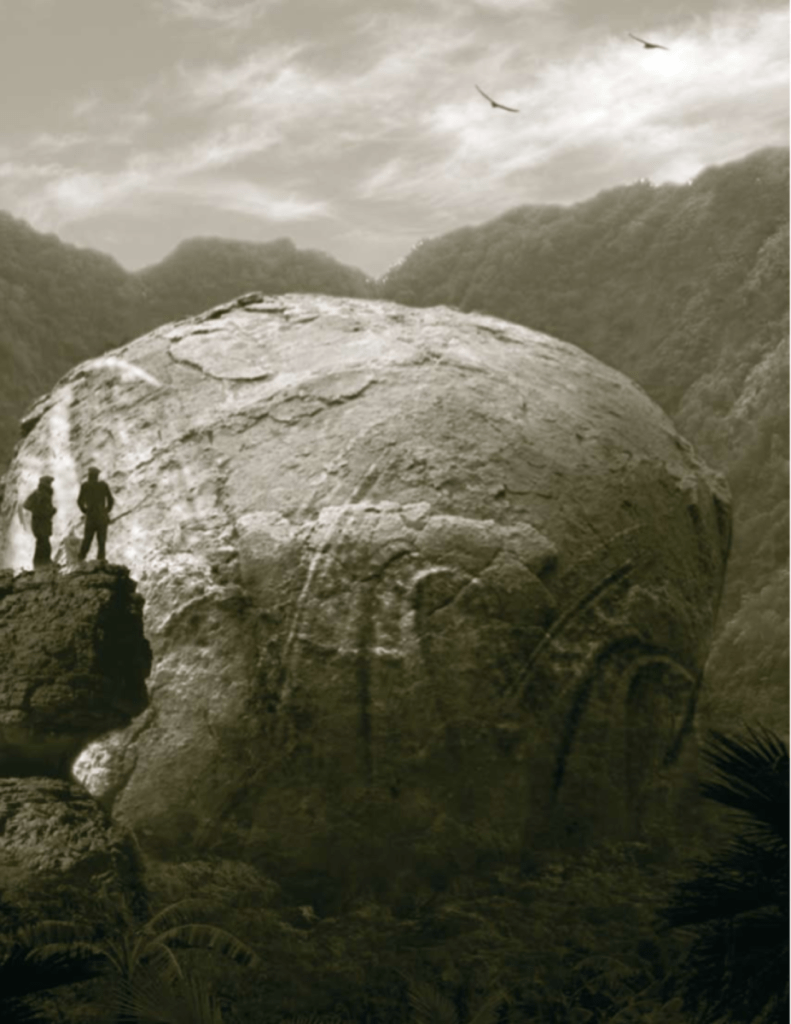
Remember, the game advises that you do not spend more than 3-4 points in Investigative Ability ranks. By getting to 4 ranks with 2 points, you now have 2 “extra” points to spend on other Abilities outside of your occupation. As you advance, this point saving spreads you out because there is a functional utility cap to Investigative Abilities.
The same is not true for General Abilities. Some Occupations have no or few General Abilities. Others, like Hobo, have several. While there may be a practical limit to how many ranks in General Abilities are useful, being able to add yet another +1 to a test is always nice. Of course, your highest General can’t be more than twice the 2nd highest General. But this is where that 2-for-1 bonus makes your character a specialist.
Night’s Black Agents
You play as former spies, special operation officers, or intelligence analysts. You are currently a black-op mercenary, a deniable asset, or part of a paramilitary. During a mission, your team discovers that a) vampires exist and b) they are using and being used by various intelligence agencies for . . . . reasons you team needs to find out. Your team will need to learn how to hunt vampires.
Where Trail of Cthulhu suggests there is such thing as a Purist Mode and the Esoterrorists has its Station Duty campaign frame, Nights Black Agents formally has several different “Modes” of play:
| Mode | Description |
| Burn | These games feature the psychological strain agents endure. |
| Dust | A gritty, low-fi, low-power espionage, which amplifies the danger of Vampires and their allies. |
| Mirror | A game of hidden agendas, shifting allegiances, and personal betrayal. |
| Stakes | Your personal stake in the outcome is higher, incorporating the Drive mechanic found in Trail. |
Each of these modes has an icon associated with it. As you read the book, those icons appear to suggest tweaks or changes to match that mode.
Step One: Choose a Background
The “promise” of Occupations in Trail of Cthulhu comes to fruition in Nights Black Agents with their Backgrounds. Technically, this step is optional, but I strongly recommend that you use these. With Backgrounds, you are being given more than a “bonus” to specific abilities. You are taking a package of Investigative and General Abilities, with ranks pre-selected.
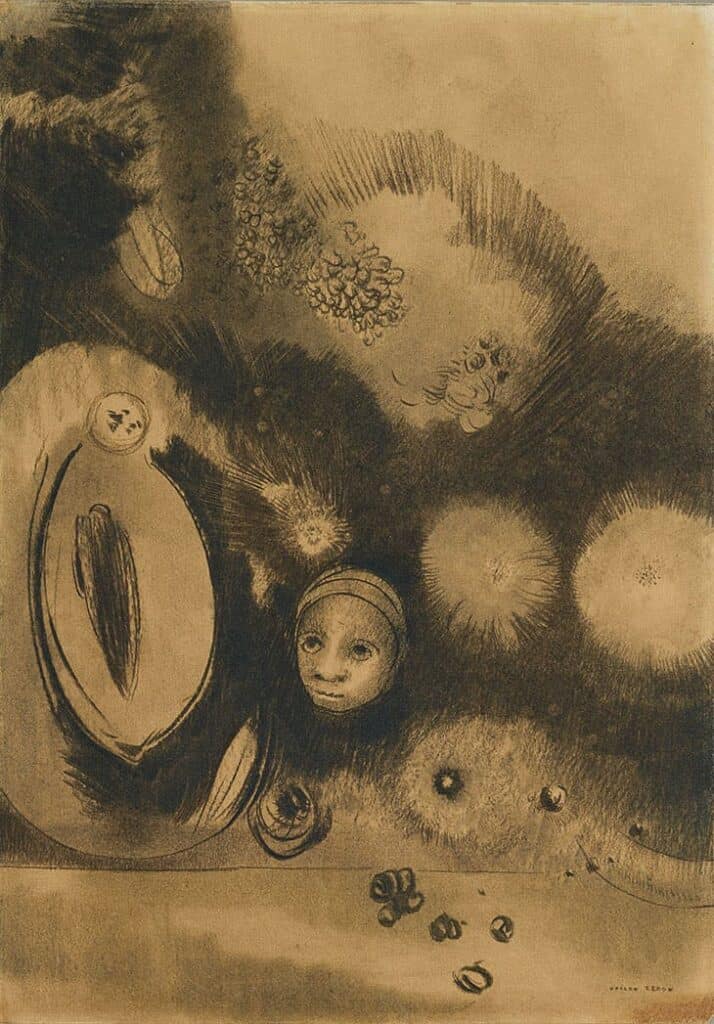
You have enough Investigative Build Points to be able to take one, two or three Backgrounds. Each Background uses up 6 Investigative Build and 18 General Build points. Also, regardless of which Background(s) you pick you get 15 Network Ranks and 10 Cover Ranks for free. These represent your accumulated contacts and identities from your years of official service.
Network points are spent to create Contacts, people you know and can call upon. These contacts have specific Investigative or General Abilities that you need. Each rank the Contact has costs you one Network point. As you “access” those abilities, you permanently use them up on that Contact (they don’t refresh), unless you spend more points. A Contact without any points may be burned and at risk of being caught by your opponents.
Cover represents your stash of fake passports and national identifications. Each separate identity has a specific number of points spent on it. Depending on how much Heat (a new mechanic representing how much local law enforcement and intelligence agencies are looking for you) you have, when you present your passport at national borders, airports, or checkpoints you’ll have to make a Cover Test.
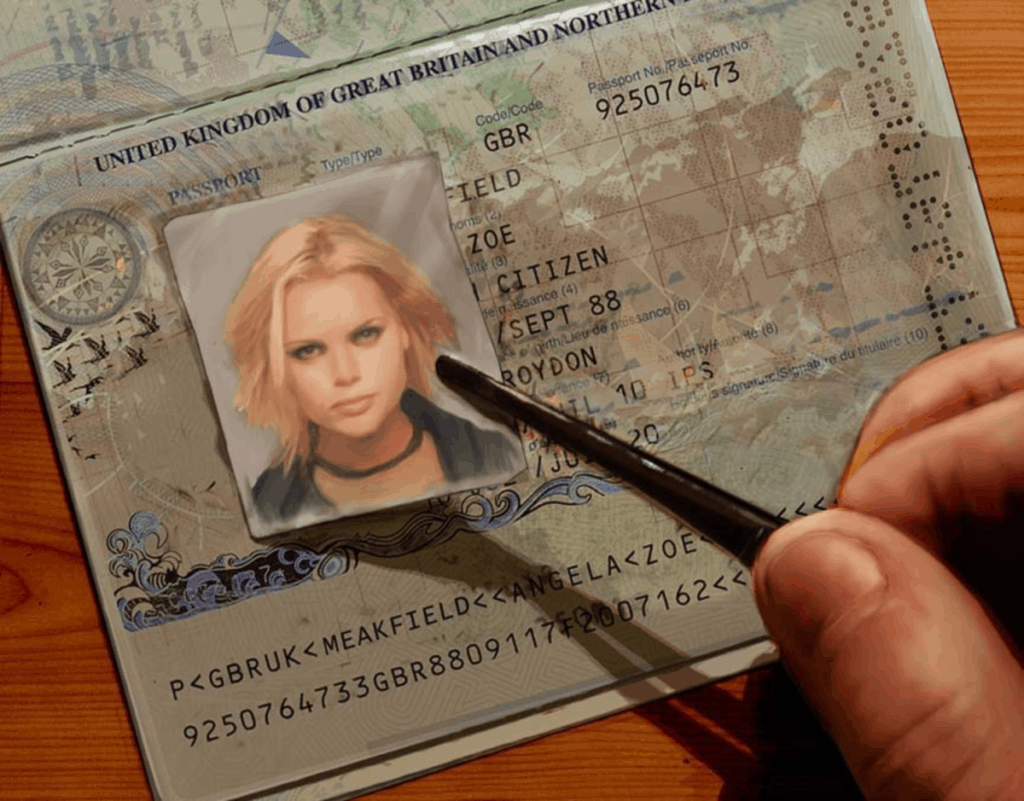
Failure means the authorities have pierced your cover. Naturally, you can spend points from that Cover to give a bonus to your Cover Test. You can spend additional Build points to add to any specific Cover.
These are the Backgrounds you can select and a brief description of each one.
| Background | Description |
| Analyst | Synthesizer of raw intelligence from the field. |
| Asset Handler | Manager of human intelligence assets in the field. |
| Bagman | CFO, but making sure the funds you’re sending around the world are not traced |
| Bang-and-Burner | Sabotage, Arson, and Demolitions are your stock-in-trade |
| Black Bagger | Silent intrusion to grab papers, plant bugs, place wiretaps. |
| Cleaner | Remover of covert evidence from scenes |
| Cobbler | Forgery, fake passports, fake visas |
| Cuckoo | Social infiltration specialist, grifters, faces, long-cons |
| Hacker | Electronic breaking and entering |
| Investigator | FBI Counter-Intelligence, detective, mystery |
| Mule | Smuggler |
| Muscle | Bodyguard, Heavy, Tough, Ex-Military |
| Watcher | Surveillance specialist |
| Wet Worker | Assassin |
| Wheel Artist | Professional Driver, Getaway Specialist |
| Wire Rat | Engineer, Mechanic, Fabricator |
Almost every Background will suggest alternate builds to achieve a different flavor to your character. The write up also suggests which other background(s) pair well with it so you can have a more coherent character concept.
Step Two: Pick your Investigative Abilities
Like all of the Gumshoe Games, Night’s Black Agents varies the number of Investigative Build Points based upon the number of active players:
| No. of Players | Build Points |
| 2 | 32 |
| 3 | 24 |
| 4 | 22 |
| 5+ | 20 |
Even at five players, 20 build points means you can select up to three backgrounds and have 2 points left over to spend. Personally, I would still only take two backgrounds and leave 8 points to customize your character.

Once again, you do not have to spend all of your points at character creation. You can save them for when you need them during a mission. Investigative Abilities are still split into Academic, Interpersonal, and Technical:
| Academic | Interpersonal | Technical |
| Accounting | Bullshit Detector | Astronomy |
| Archaeology | Bureaucracy | Chemistry |
| Architecture | Cop Talk | Cryptography |
| Art History | Flattery | Data Recovery |
| Criminology | Flirting | Electronic Surveillance |
| Diagnosis | High Society | Forensic Pathology |
| History | Interrogation | Forgery |
| Human Terrain | Intimidation | Notice |
| Languages | Negotiation | Outdoor Survival |
| Law | Reassurance | Pharmacy |
| Military Science | Streetwise | Photography |
| Occult Studies | Tradecraft | Traffic Analysis |
| Research | Urban Survival | |
| Vampirology |
Comparing Night’s Black Agent’s list of Investigative Abilities to the two games I’ve already covered, it is a much longer list. Also, several Academic Abilities (like Chemistry and Astronomy) are Technical. This emphasizes the applied or practical aspects of these disciplines.
Human Terrain combines together several areas that a middle-schooler might call Social Studies. Page 22 of Night’s Black Agents says it covers disciplines of “anthropology, sociology, theology, social psychology, political science, and propaganda.”
Tradecraft starts at 1 for every character. Tradecraft refers to the specific set of skills that all spies and spooks are trained in, such as: setting up a dead drop, conducting a car toss, determining an agent’s prior agency based upon techniques, etc.
Urban Survival is like outdoor survival, but in urban settings. Except it is more than camping in a city. You are intimately familiar with the feel, pace and mood of a city. You can find your way around and are friendly with the local homeless population.
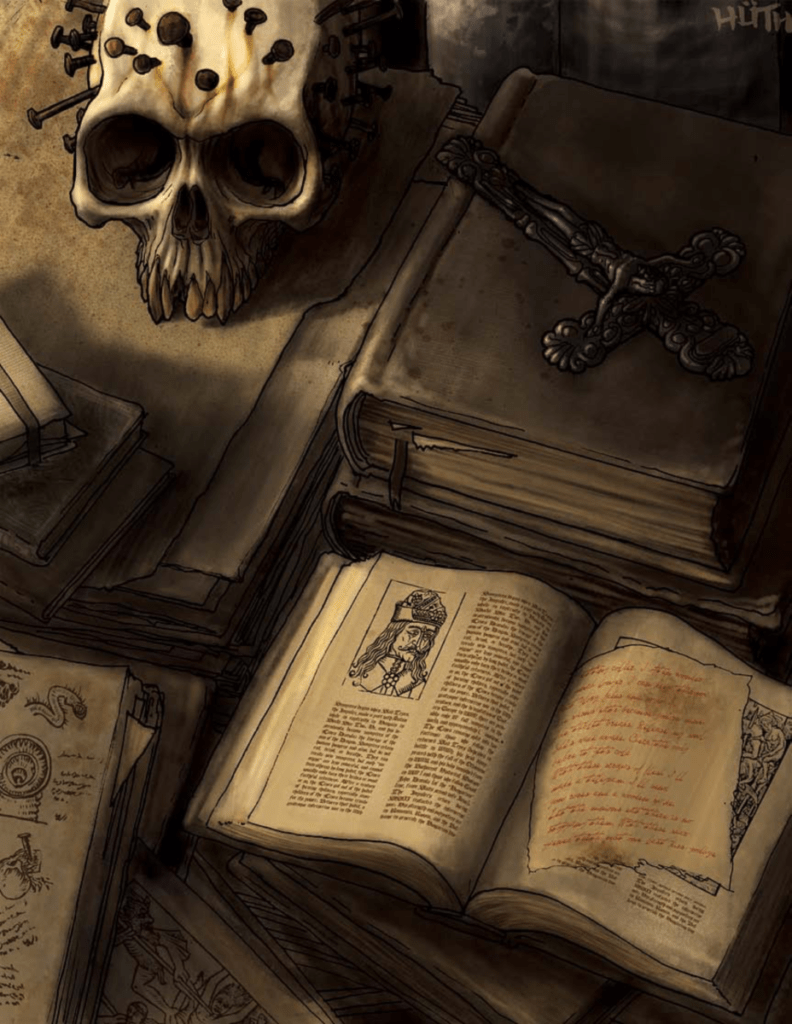
Vampirology is the knowledge and study of Vampires. You do not get to start with any points in this Ability, just like Cthulhu Mythos in Trail of Cthulhu. Unlike the Mythos Ability, taking Vampirology does not have any effect on your character’s sanity. Unlike in Esoterrorists, your Agent knows nothing about the Vampire conspiracy at the start of the game.
Step Three: Pick your General Abilities
Your Agents have 70 points to spend on General Abilities. Each Background spends 18 of those points. With two backgrounds (36 points) that leaves 34 points to customize your character. While the previous two games suggest that getting up to 8 points in a General Ability makes your character an expert, Night’s Black Agents backs that up with Cherry Abilities.
Cherries are something extra you can do by dedicating at least 8 points in a General Ability. For example 8 points in Conceal means you can hide a knife, detonator, lockpicks etc. so they cannot be found absent an x-ray or strip search. With 8 points in Mechanics, you can spend Mechanics points as if you were using Preparedness by describing how your jury-rigging a device to meet your need, McGyver-style.
The General Abilities you can choose from are:
| Athletics | Conceal | Cover |
| Digital Intrusion | Disguise | Driving |
| Explosive Devices | Filch | Gambling |
| Hand-to-Hand | Health | Infiltration |
| Mechanics | Medic | Network |
| Piloting | Preparedness | Sense Trouble |
| Shooting | Shrink | Stability |
| Surveillance | Weapons |
Like with Investigative Abilities, Night’s Black Agents has a longer list than the Esoterrorists and Trail of Cthulhu. I addressed Cover and Network above.
Health and Stability works much the same way as in The Esoterrorists. Both can go down to a -12 at which point your either dead, insane, or both. If your health drops to zero or below, you’ll have to make a Consciousness test, based upon the absolute value of your current health pool. When encountering shocking events, a Stability Test, to see if you lose Stability Pool points.
Step Four: Pick your Military Occupational Speciality (MOS)
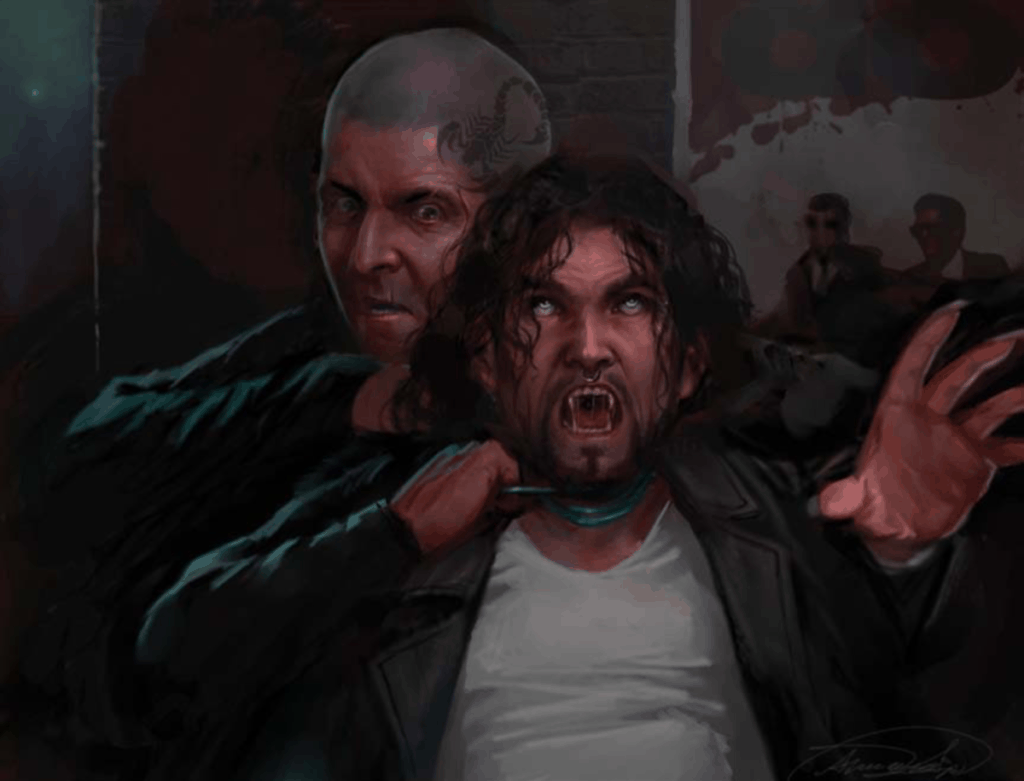
Your MOS is one of your General Abilities. You get only one MOS and you take it at character creation. The book strongly suggests that characters do not share a MOS, to avoid splitting the spotlight. Mechanically, the MOS means you can choose to automatically succeed in a test of that Ability, but only once per session.
No only do you succeed you, but you succeed with style. If you have MOS shooting, not only do you hit your target but you kill it. MOS driving means you can make a clean getaway. However, this only applies to human opponents, not supernatural ones.
Step Five: Personalize your Agent
Depending on your Game Mode, this may just be adding those small personal characterization choices as you complete the character sheet. But if you’re using one of the alternate game modes, then you’ll be choosing Sources of Stability and a Drive.
Like with the Esoterrorist and Trail of Cthulhu, your Source of Stability is the person you escape to to clear your mind. But in Night’s Black Agents there are three sub-types of Sources: Symbol, Solace, and Safety.

Symbol is a non-human representation of something you value, like a religious object, your country’s flag, or your father’s dog tags. You can refresh some Stability by handling that object. But losing it means you permanently loose 1 rank in Stability.
Solace is the person you seek out for human contact to make your stress and pain recede for awhile. To refresh 2 points of Stability with your Solace, you must be able to spend 6 hours during a mission. Spending all day will allow a complete refresh. If your Solace betrays you, you lose 2 ranks of Stability. If they are turned by a Vampire or killed, you lose 3 ranks of Stability.
Safety is the person and place you would flee too without thinking about it. You do not need to go there to benefit from you Safety, just knowing it exists and open to you is enough. At the end of any session where you Safety still exists, you can refresh one Stability point.
Drives are what motivate your Agent to keep pushing forward into danger.
Drives prevent players from making boring, cowardly choices for their characters. They don’t require foolish or suicidal recklessness, just the same degree of courage and initiative you’d expect from a heroic protagonist.
Night’s Black Agents p. 37
These are the Drives suggested by the book:
| Altruism | Atonement | Comradeship |
| Mystery | Nowhere Else to Go | Patriotism |
| I Never Left | Programming | Restoration |
| Revenge | Slayer | Thrill-Seeker |
| Transparency |

The final few steps flesh out your background. You will need to decide how you “Came In” to the life of a clandestine operator. Page 41 suggests what world or national events occurred that would have lead you into this life depending on your character’s age at the start of the game. Next, you’ll need to figure out why and how you “Got Out” of formal clandestine office. Finally, how did you and the other Agents meet up?
Final Thoughts on Night’s Black Agents Character Creation
I like Night’s Black Agents creation method. Players can go completely custom or select up to 3 backgrounds to streamline the creation process. But on the other hand, the background system is more necessary because of the longer list of Investigative and General Abilities. But with the MOS and General Ability Cherries there are more mechanically diverse choices to make, which can lead to analysis paralysis.
These choices are evocative and are tied very much into the setting, but the appeal of character creation in the Esoterrorists is simplicity and ease.
The Fall of Delta Green
The Fall of Delta Green Book starts with:
A quagmire overseas chews up American forces.
Apocalyptic cults rise in the Middle East, riots paralyze Paris, and Russia moves aggressively into Europe.
The United States wages secret war around the globe while its social fabric shreds and its cities crackle with gunfire.
New technologies, new sciences, and new music revolutionizes our lives.
The Earth’s ecology teeters at the brink of toxic ruin.
The stars are coming right.
It is 1968
The Fall of Delta Green
This setting combines together elements of the three Gumshoe settings already discussed above:
- The Esoterrorists Ordo Veritatis, but Delta Green is a Top Secret, official but unacknowledged program of the United States Government.
- Like in The Esoterrorists, your Agents have day jobs, but they are within official US Agencies: Military, CIA, State Department, Department of Defense, etc.
- Your Agents are fighting cults and monsters of the Cthulhu Mythos, like in Trail of Cthulhu, but you start knowing about the Mythos as in The Esoterrorists.
- Your Agents, as members of a Top Secret, Code-Word clandestine paramilitary agency are highly-trained operatives like the Agents in Night’s Black Agents. But you are closer to Special Forces like the Army Rangers or Green Berets, than CIA spies.

But where Trail of Cthulhu is set in the early 1900s, Esoterrorists in the late 1990s and beyond, and Night’s Black Agents in the 2010s and beyond, Delta Green is set in the late 1950s and ends on July 24, 1970 when the US Joint Chiefs of Staff official disband Delta Green.
The borrowing from these prior Gumshoe settings continues with character creation. It emphasizes that character creation should be collaborative: you’re making a team, not a bunch of solo-agents who are forced together by circumstances. As always, if that’s your fun or theme for a campaign or a one-shot, you do you.
Step One: Pick Your Military Service and Department
With the setting being right on the heels of World War II, the Korean War, and the start of the Vietnam War, the military draft is still active in the United States. Where Night’s Black Agents suggested you selected up to 3 Backgrounds, the Fall of Delta Green requires you to pick a Military Service.
Of course, you could come up with a reason why your character was drafted. There were several exemptions, including conscientious objector, being the son of a Senator, or even bone spurs in your heel. But it is strongly suggested that you pick a Department to explain your placement within Delta Green.
That choice will then give you Investigative and General Abilities and ranks in each, just like NBA’s Backgrounds. You then subtract those points from your available build points.
Military Service
These are the suggested Military Service Templates:
| Peacetime Conscription | Chaplain | Medic (Field) |
| Army Medical Corps (Doctor) | Army Medical Corps (Psych) | Sailor or Pilot |
| Coast Guard | USAFSS Big Eye Operator | Soldier or Marine |
| Soldier (Intelligence Officer) | Psychological Operations Group | USAIC Urban Intelligence Spec. |
| Special Forces |
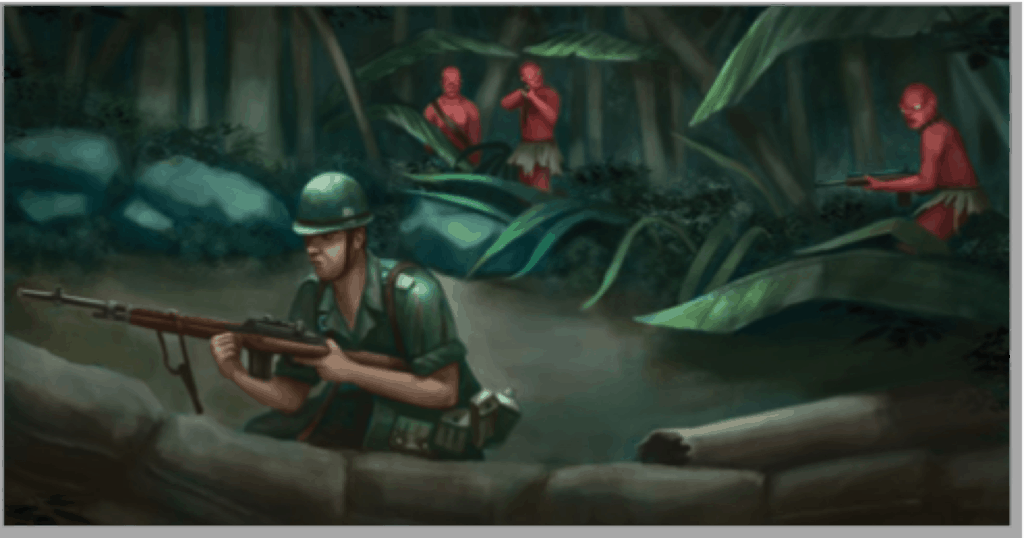
Unlike Night’s Black Agents Backgrounds, each of these templates cost variable points. Also, some of them have two versions, Former and Active Duty. Active Duty costs more points, but means your Agent is still enlisted or commissioned. If you’re Active Duty, then you do not pick a Department.
Also, in consultation with the Handler (Delta’s Green’s version of the Game Master or Keeper), you can assign a military rank to your Agent. This provides additional ranks in various Abilities that are subtracted from your starting build points.
Departments
Departments are your Agent’s cover assignment. They are the official US Agency that your Agent works for when not on Delta Green missions. While your Agent may have avoided Military Service, it is strongly encouraged they pick a Department. They do provide some non-Department Templates.
The Departments to choose from are:
| Advanced Research Projects Agency | Air Force Office of Special Investigations | Atomic Energy Commission |
| Central Intelligence Agency | Communicable Disease Center | Defense Intelligence Agency |
| Defense Research Division | Federal Bureau of Investigation | Federal Bureau of Narcotics |
| National Air and Space Administration | National Reconnaissance Office | National Security Agency |
| Office of Naval Intelligence | State Department | U.S. Marshalls Service |
Most of the Departments only have one or two sub-departments or templates to choose from. But, as should be no surprise, the CIA and FBI have multiple sub-templates to choose from.
Central Intelligence Agency Templates:
| Directorate of Intelligence Analyst | Directorate of Plans Case Officer | Directorate of Plans Operative |
| Office of R&D Specialist | Political Action Division Officer | Special Operations Division Operator |
| Surreptitious Entry Specialist | Technical Services Division Designer |
Federal Bureau of Investigation Templates
| Laboratory Researcher | Special Agent | Undercover Agent |
| Domestic Intelligence Division “Black- Bagger” | Domestic Security Division |
Other Templates
If you want to play an outsider to the bureaucracy of the US Government, then there are a few templates to choose from:
| Activist | Archaeologist | Engineer/Technician |
| Gangster | Physician | Pilot |
| Scholar | Tribal Fighter |
If you pick one of these, then you will need to work with your Handler to figure out how or why you are a Delta Green Agent.
Step Two: Pick Your Investigative Abilities
Like all other Gumshoe games, your Investigative Build Points are given as follows:
| No. of Players | Investigative Points |
| 2 | 30 |
| 3 | 24 |
| 4 | 20 |
| 5+ | 18 |

Most of the heavy lifting of Ability selection is done with your Military Service and Department template selections. Of course there are points left over and you are allowed to move the templated points around. Once again, Investigative Abilities are divided into Academic, Interpersonal, and Technical Categories:
| Academic | Interpersonal | Technical |
| Accounting | Agency | Architecture |
| Anthropology | Cop Talk | Art |
| Archaeology | Flattery | Chemistry |
| Astronomy | HUMINT | Cryptography |
| Biology | Inspiration | Forensics |
| Criminology | Interrogation | Forensics |
| Foreign Language | Intimidation | Fringe Science |
| History | Negotiation | Notice |
| Law | Reassurance | Pharmacy |
| Medicine | Streetwise | Photography |
| Military Science | Tradecraft | Physics |
| Occult | SIGINT | |
| The Unnatural | Survival | |
| Traffic Analysis |
Definitely a lot of returning Abilities, with several changing categories to reflect the investigatory emphasis of those areas. But there are some new ones that should be explained and returning Abilities with special rules.
The Unnatural is Delta Green’s version of Cthulhu Mythos in Trail. It is suggested that all Agents start with 1 point in this Ability for free. Just like the Mythos Ability, your maximum Sanity is 10 minus your points in The Unnatural. This means all agents start with a maximum Sanity of 9.
HUMINT and SIGINT stand for Human Intelligence and Signals Intelligence. SIGINT is your ability to operate electronic communications devices and surveill electronic communications to gather information (clues). This matches how that term is used in the real world.
HUMINT typically means intelligence you’ve obtained from a human source. In Delta Green, it instead means intelligence you’ve obtained from observing a human target/source. It replaces and expands the abilities Assess Honesty or Bullshit Detector from other Gumshoe games.
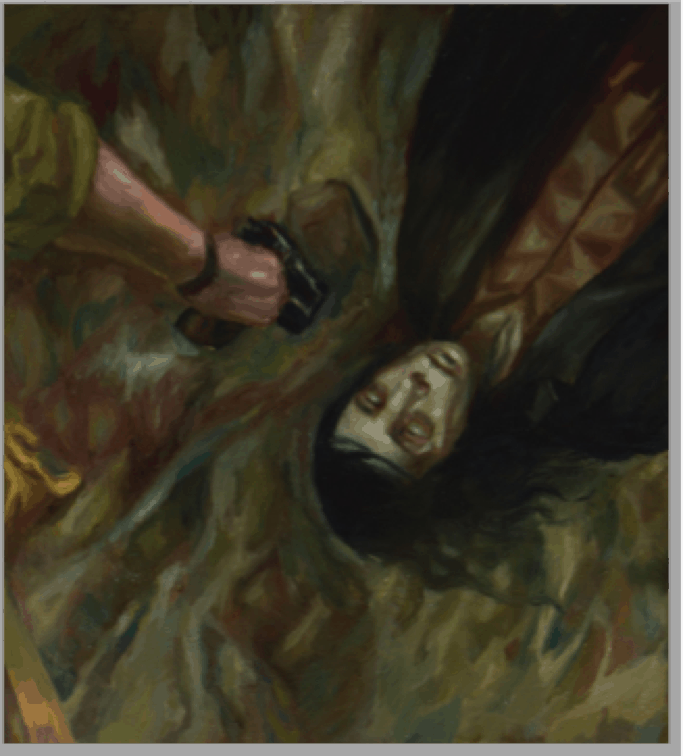
Agency is not a single Ability, but multiple Sub-Abilities. It replaces Bureaucracy as an Investigative Ability and your Agent gets 2 points for free. Your ranks are purchased for a specific government agency: CIA-2, Special Forces 1, USMC 3. Typically, you start with points in the US Agency in which you’re employed as your cover.
Furthermore, you cannot assign points to an Agency you did not previously work in. Of course, this may mean you’ve changed covers in the middle of the campaign because your cover has been blown. But your points in the 2nd Agency cost double and 3rd Agency cost triple.
Art is not only understanding Art History, but your ability to make art and to make forgeries. You can specify a medium in which you create works of art. With forgery, you actually designate points into Art (Forgery) to make forged documents. You may also need to make a Data Retrieval or another General Ability test to get those credentials into the system for the forgery to be effective.
Page 23 suggests that all Agents buy 1 point in Notice, HUMINT, and Agency if your Template doesn’t already have those Abilities. It also suggests that every Agent have at least one Interpersonal Investigative Ability. And if your Agent has several Interpersonal Abilities, then it is suggested you have one or more Foreign Languages so you’re not hampered abroad.
Step Three: Pick Your General Abilities
You have 65 points to buy General Abilities. Of course, your Templates will reduce this total. The General Abilities are:
| Athletics | Bureaucracy | Conceal |
| Demolitions | Disguise | Drive |
| Filch | Firearms | First Aid |
| Health | Heavy Weapons | Mechanics |
| Melee Weapons | Network | Pilot |
| Preparedness | Psychotherapy | Ride |
| Sanity | Sense Trouble | Stability |
| Stealth | Unarmed Combat |
Most of these General Abilities are similar and familiar from the other settings. One notable General Ability skill is Bureaucracy, which in Night’s Black Agents and the Esoterrorists is an Investigative Ability. This change reveals a truth about this setting.
In NBA and Esoterrorists, your knowledge of Bureaucracy merely permits you to obtain clues, with spends giving you extra knowledge. There is no suspense that your character can and will successfully navigate the bureaucracy to get what they need.
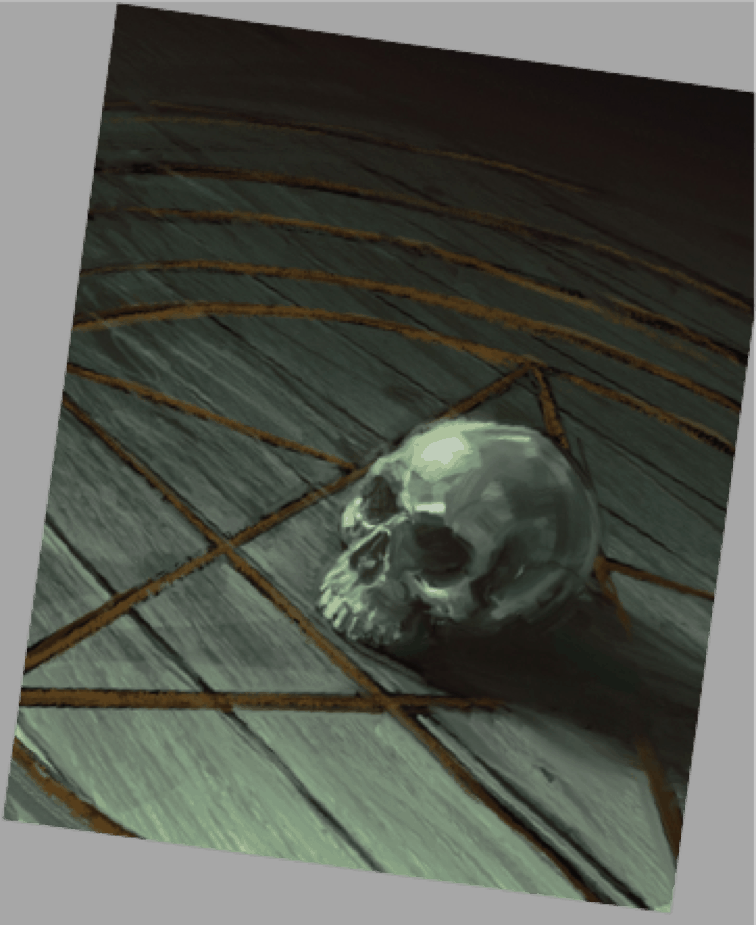
But in the Fall of Delta Green, battling the internecine, interminable government bureaucracy of the US Government is a core feature of the game. Manipulating that bureaucracy get what your Agent needs is and will remain in doubt. If there is question whether or not your Agent will succeed in a task, then a Test is necessary. Thus Bureaucracy is a General, not an Investigative, Ability.
As you can see, Fall of Delta Green brings back Sanity along with Stability and Health. These work in the same way as in Trail of Cthulhu.
Step Four: Pick Your Personalizations
There are two parts of this step: Selecting your Bonds and your Motivations.
Bonds
Start by selecting 3 Bonds. These are this setting’s Sources of Stability. You are identifying three individuals whose relationship helps you maintain your Stability.
But here, those Bonds have more mechanical heft than Sources in the other settings. Each Bond has ranks equal to your highest ranked of the following interpersonal skills:
- Flattery
- Inspiration
- Negotiation
- Reassurance
If you do not have any ranks in this Abilities, then your Bond rank is 1. As the Interpersonal rank drops (or lowers) so does the Bond rating, but its maximum is 4.
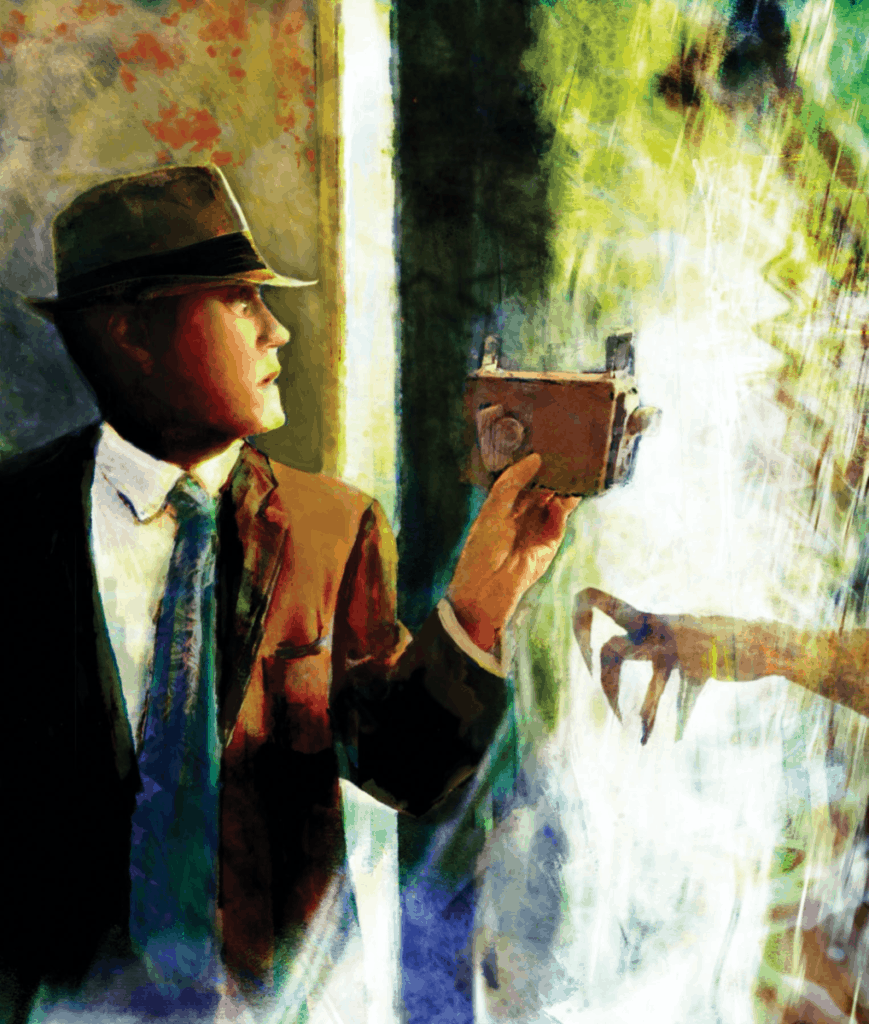
Your Bonds can be with a person, a family or a group. You and the Handler must provide some detail and substance to these Bonds. These Bonds come into focus in-between missions. During an Operation you can spend those Bond points during Stability tests. If that Bond drops to -1, it is permanently broken. They only refresh in-between missions as follows:
Each Agent is encourage to go through a vignette with the Handler on their reunion with their Bonds. Page 128 details the types of events or things these vignettes should cover or address. The Agent must make Stability tests to rebuild those bond points, spending Interpersonal points as necessary. But those spent points are not available for the next mission.
Other things you can do in-between missions, other then rebuilding your bonds are:
- One With Nature
- Establish a New Bond
- Head Games
- Stay on the Case
- Study the Unnatural
It is also possible to develop Bonds with your Delta Green teammates following collective trauma. These are detailed on page 46. If one of these events happens, you make a Difficult 4 Stability Test at the end of the mission. If you Fail, you now have a Bond with each teammate or increase your bond by 1. The Bond rating is half of your highest, non-Delta Green, Bond rating.
But you also immediately lose one point from one of those Bonds. This also applies for any Bonds you increase. This highlights how your traumatic, war-time experiences strengthens your Bonds with your brothers and sisters in arms, but at the cost of your friends and families.
Motivations
Next is Motivations, which are the substitute for Drives in the other games. Page 47 provides some advice for Players and Handlers to invoke these Motivations to explain why the Agents would irrationally run towards danger.
Mechanically, failing to follow your Motivation can cause a loss of 2 to 5 Stability pool points. But the game prefers that Handlers do not use this stick to force Agent choice. Instead, Agents are supposed to follow their Motivations. The point is they are to complete their mission no matter the cost.
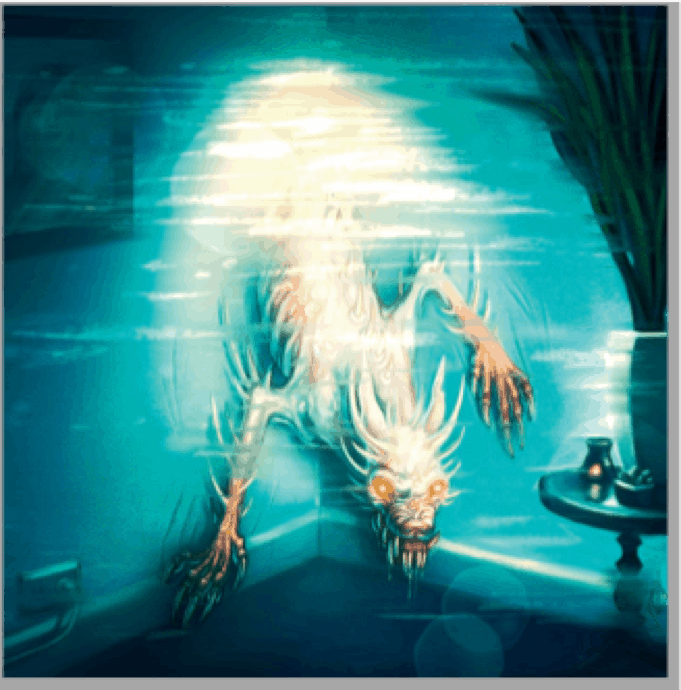
The Player’s choice to have their Agent lay down, rather than get up, should come at this cost. It simulates the exhaustion and psychic drain these never-ending missions and exposure to mind-bending horror takes on Agents. There are no good choices, merely less bad ones.
Conversely, the book encourages Handlers to allow Agents who push forward on their Motivations to refresh 1 to 2 pool points in a General Ability. This is to mechanically reinforce these Motivations are closer to psychological compulsions. The list of Motivations are:
| Altruism | Atonement | Comradeship |
| Duty | Mystery | Patriotism |
| Revenge | Thrill-Seeker |
Finally, on page 49, you select and work out the more personal details of your character: name, age, background, personal habits (e.g. favorite drink, hobbies, favorite team). In addition, you should answer the following:
- Something you admire about the Agent.
- Something you dislike about the Agent.
- Why does Delta Green trust your Agent to confront unnatural threats and keep them secret?
- Why does your Agent agree that helping Delta Green and keeping its secrets feeds her Motivation?
Final Thoughts on the Fall of Delta Green
Delta Green pulls together the various threads presented by The Esoterrorists, Trail of Cthulhu, and Night’s Black Agents. While each of those build on the prior, they also take the game in different directions.
Esoterrorists puts you inside a benevolent organization from the start. Trail of Cthulhu makes your team more of a collection of lone wolves, discovering the existential horror of the Mythos. Night’s Black Agents makes you former members of an organization, with highly developed action-packed skills.
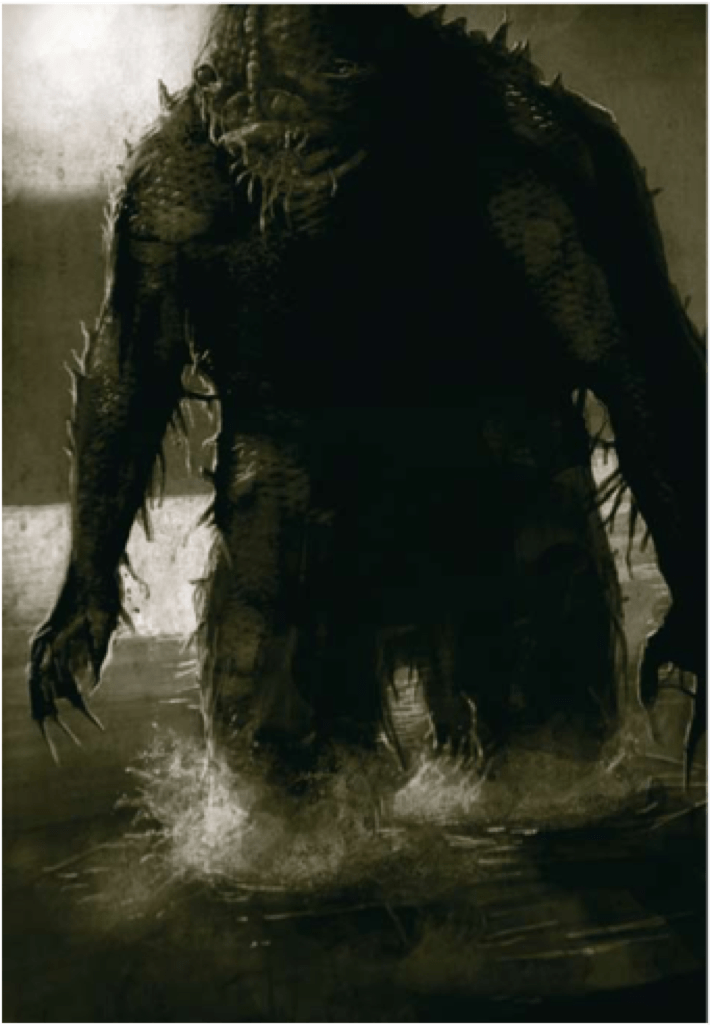
Delta Green’s mix of and variations on the Templates (Occupations and Backgrounds), Investigative/General Abilities, Bonds, and Motivations is great at evoking the specific feel of this setting: You are trying to protect the world, you believe in your mission, but does anyone else in the faceless bureaucracy of the 1960s US Government?
Also, the Bonds mechanic ties together the story of your Agent’s home front, loosely developed in Esoterrorists and explored in Night’s Black Agents, by adding in mechanical backing. It evokes the story of Vietnam, fighting for a home that is not fighting for you. Fighting for a home that you no longer care for or understand.
Final Thoughts on Character Creation in Gumshoe
Gumshoe character creation splits its emphasis between what your character does and who they are. On the latter point, it wants you to figure out not just who you are but your place in the world before the weird horror begins. As the system evolves over these four setting books, more mechanical heft reinforces that sense of person and place for the characters.
This is important for evoking the mood of weird horror. In traditional fantasy fiction and roleplaying games (Dungeons and Dragons), while there is nothing stopping you from developing that sense of your character’s person and place, the overwhelming emphasis is on what you do.
Even in grittier games like Shadowrun, your characters happen to the world. In Gumshoe, it is equal parts what reality your characters impose and the reality that is imposed upon your characters.
If you want some links on where to buy these Gumshoe settings, they can be found over here.
If you want to explore the wilder (and wider) world of tabletop roleplaying games go there! If you want to start to learn on how to paint miniatures, click already! Or maybe you want to read more of my posts about Dungeons and Dragons, then click away here!

